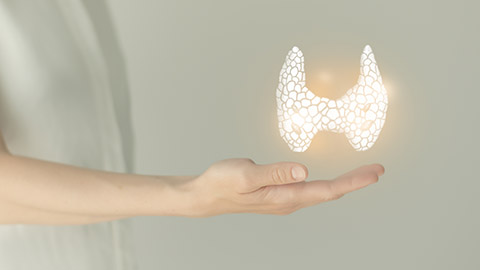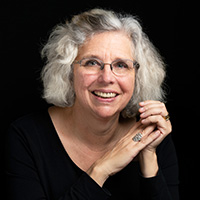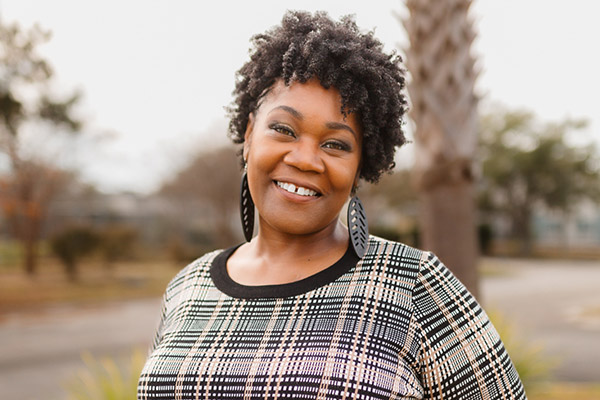06/10/2022

A weightlifting client who has never had professional massage wants help with back and leg pain. Simple enough, right? But in their first interview they reveal a 4-year-old history of thyroid cancer, thyroidectomy, and lymph node removal.
What repercussions does this have for their massage? Can we move forward? Do we need to look for signs of lymphedema? Does lymphedema even happen with lymph flow in the neck?
Stay tuned for a look at thyroid cancer, and some excellent information-gathering practice guidelines.
Resources:
Pocket Pathology: https://www.abmp.com/abmp-pocket-pathology-app
‘Lymphedema’ (no date) American Head & Neck Society. Available at: https://www.ahns.info/survivorship_intro/topical_review-lymphedema/ (Accessed: 18 May 2022).
Lymphedema After Head and Neck Cancer | OncoLink (no date). Available at: https://www.oncolink.org/cancers/head-and-neck/head-and-neck-cancer-survivorship/lymphedema-after-head-and-neck-cancer (Accessed: 18 May 2022).
Stephen, C. and Munnoch, D.A. (2016) ‘Lymphoedema of the upper limb: a rare complication of thyroid surgery?’, BMJ Case Reports, 2016, p. bcr2016214376. doi:10.1136/bcr-2016-214376.


Books of Discovery: www.booksofdiscovery.com
Anatomy Trains: www.anatomytrains.com
Anatomy Trains is a global leader in online anatomy education and also provides in-classroom certification programs for structural integration in the US, Canada, Australia, Europe, Japan, and China, as well as fresh-tissue cadaver dissection labs and weekend courses. The work of Anatomy Trains originated with founder Tom Myers, who mapped the human body into 13 myofascial meridians in his original book, currently in its fourth edition and translated into 12 languages. The principles of Anatomy Trains are used by osteopaths, physical therapists, bodyworkers, massage therapists, personal trainers, yoga, Pilates, Gyrotonics, and other body-minded manual therapists and movement professionals. Anatomy Trains inspires these practitioners to work with holistic anatomy in treating system-wide patterns to provide improved client outcomes in terms of structure and function.
Website: anatomytrains.com
Email: info@anatomytrains.com
Facebook: facebook.com/AnatomyTrains
Instagram: www.instagram.com/anatomytrainsofficial
YouTube: https://www.youtube.com/channel/UC2g6TOEFrX4b-CigknssKHA
0:00:01.2 Ruth Werner: Hey, I Have A Client Who listeners, did you know I have a growing library of NCB approved one-hour online self-paced continuing education courses that you can do any time, anywhere? Well, now you know. Current classes include What's Next: COVID-19 Updates From Massage Therapists and A Massage Therapist's Introduction To Pharmacology Part One, and brand new, A Massage Therapist's Introduction to Pharmacology Part Two. Classes are $20 each and they confer one hour of continuing education credit. Wanna know more? Visit my website at ruthwerner.com and check it out. Be sure to sign up for my mailing list so you'll never miss a new class.
0:00:47.5 Speaker 2: Anatomy Trains is delighted to invite you to our in-person fascial dissection workshop, May 30th through June 3rd, 2022. We're excited to be back in the lab with Anatomy Trains author Tom Myers, and master dissector Todd Garcia in Todd's Laboratory of Anatomical Enlightenment in Boulder, Colorado. Join students from around the world and from all types of manual, movement, and fitness professions to explore the real human form, not the images you get from books. Visit anatomytrains.com for details.
[music]
0:01:33.5 RW: Hi, and welcome to I Have A Client Who... Pathology Conversations with Ruth Werner, the podcast where I will discuss your real life stories about clients with conditions that are perplexing or confusing. I am Ruth Werner, author of A Massage Therapist's Guide to Pathology, and I have spent decades studying, writing about and teaching about where massage therapy intersects with diseases and conditions that might limit our client's health. We almost always have something good to offer even with our most challenged clients, but we need to figure out a way to do that safely, effectively and within our scope of practice, and sometimes, as we have all learned, that is harder than it looks.
0:02:20.3 RW: Today's episode comes from a massage therapist who has a great story to share and as a bonus, they also have a terrific piece of advice, which I will include at the end, so be sure to stay for the whole thing, which I'm sure you do anyway, because you are awesome. And the story goes like this. I have a client who is coming in for back pain and calf pain related to weightlifting and strength training, but I uncovered during reviewing their client intake and preferences form that they had thyroid cancer about four years ago, and their treatment included a thyroidectomy with lymph removal in the neck that year. We had an introductory call before our first appointment, so I was able to get a little more information. They haven't had any complications since surgery and recovery and have been cleared for strength training and lifting larger weights. The client does not recall the doctors discussing any risk of lymphedema, so I wasn't able to get much additional information about that. I feel like while I'm able to find lots of information on breast cancer and find studies and research on axillary lymph node removal and risk of lymphedema, I found much less on the risks associated with the removal of lymph nodes in the neck.
0:03:39.5 RW: The client has no history of swelling post-recovery from 2018 to today in the chin or neck or face or head, and this will be their first professional massage. For now, since the client's concerns and the reason for seeking massage are not related to the thyroidectomy and lymph node removal, my goal is to focus attention on their areas of concern without including the anterior neck in my more focused work and working only gently around the neck area, gently working away from the head toward the arm, inferiorly and laterally and not from the neck toward the head superiorly. I'm also still doing research though, to see if the supraclavicular lymph nodes are sometimes removed during thyroidectomy and if so, will would that change anything in my approach as I believe supraclavicular lymph nodes filter in different directions than the other lymph nodes in the neck. While I have some knowledge of the lymphatic system and some limited training in working with clients with a history of cancer, I'm not trained in MLD. If the client was looking to address something specific to the thyroidectomy, I would refer out for work in that area, but since their concerns are not directly correlated to their goals or a reason for seeking massage, I feel comfortable in working with them, but a second look is always welcome.
0:05:00.6 RW: How am I doing with this approach? Any red flags? Oh, how I love it when contributors do most of the heavy lifting. Get it? Heavy lifting. A weight lifter. How I love it when contributors do most of the heavy lifting for me. This situation is the kind of thing that trips me and a lot of other people up all the time. The client is looking for help toward their athletic goals, their cancer and surgical history came up incidentally, how tempting it would be to re-focus the whole of client care onto that alarming issue and how wrong-headed it would be as well. But this is a pathology podcast, and there's a pathology in our question here, so let's take a peak at thyroid cancer and then get back to our contributor's concerns. You will recall, I'm sure, that the thyroid is a two-lobed gland that wraps around the trachea right in the middle of the neck. It produces a variety of hormones that mostly have to do with metabolism in general, specifically thyroxine, that's also known as T4, and triiodothyronine, that's also called T3, and it secretes a hormone having to do with calcium management, that's calcitonin, and that decreases blood calcium to increase bone density.
0:06:22.8 RW: The thyroid also houses the tiny pea-sized parathyroid glands that secrete an antagonistic hormone, parathyroid hormone, which stimulates osteoclasts to decrease bone density and increase calcium levels of the blood. I can never keep these two straight, I have to look them up every single time. Isn't it great that life is an open book test?
0:06:45.6 RW: Thyroid cancer isn't super common, but numbers of new diagnoses have been rising for a while, I'll get back to one idea about why that might be so in a moment. We see in this country about 54,000 diagnoses a year, which seems pretty high, and about 2000 deaths from thyroid cancer each year, which is quite low by comparison. What that contrast tells us is that most of the time thyroid cancer is not a fast-acting aggressive form of the disease. 30 or 40 years ago, and further back from that, we saw a lot of thyroid cancer cases associated with some weird medical practices that date from the '40s through the '60s. Tonsillitis and acne used to be treated with a radiation, for instance, and we had some weird ideas about thymuses, so sometimes thymuses were irradiated because doctors thought that they were too big.
0:07:40.7 RW: Consequently, a lot of people in that age range, which just precedes mine, developed thyroid cancer in adulthood as a complication of childhood exposure to radiation. We don't do that anymore, but the numbers of new thyroid cancer diagnoses continues to rise, probably, and this is good news, because our ability to detect it early is much better than it used to be, so we're finding more cases in earlier stages, and this of course, contributes to better survival rates. The thyroid is mainly made of two types of epithelial cells; follicular cells that secrete T4 and T3, and para-follicular cells, that secrete calcitonin. Either of these cell types can develop cancer, which is typically related to environmental exposures like we've talked about, and/or some genetic predispositions. Some types of thyroid cancer can be very aggressive with a high risk of metastasis to the lymph nodes, trachea, lungs and bones. Some of these versions are also resistant to many treatment options as well, which makes them even more difficult, but the most common version of thyroid cancer is called papillary thyroid cancer. It affects follicular cells, and this papillary form is the situation in about 85% of all cases, which is very good news because this is usually a stable form of cancer. It has a very high successful treatment rate with the removal of part or all of the thyroid and then checking from metastasis in the lymph nodes of the neck.
0:09:17.4 RW: This is precisely what our contributor described from their client, so I think it's safe to assume that four years later with no complications and a full and active lifestyle, this is what our client in today's story was dealing with. But the contributor remembers that recovery from thyroid cancer and surgery is not the reason the client wants to receive massage. They need help to move toward their weight lifting goals with their back and leg pain, they don't wanna change anything about the function or structure of their post-surgical neck. However, there is legitimate concern about adding bodywork to this client's challenges, remember it's their first professional massage. I did a quick look for lymphedema and thyroidectomy. I found a few resources that were frustratingly contradictory about how common this is. Some said most patients experience some symptoms, others said it's very, very rare, but they did agree that if lymphedema in the neck was going to develop, it would happen within a few months of the surgery. Symptoms could be visible swelling of the face and neck, but some people have swelling internally of the mucous membranes and that can make it difficult to breathe.
0:10:28.0 RW: This client appears to have escaped lymphedema altogether, which is wonderful. I don't have the expertise to comment on our contributors questions about supraclavicular lymph nodes, we have many wonderful knowledgeable people who have much more informed opinions than mine on this issue. I do think that if the client reports any sense of congestion or fullness around the neck or head, then they need a referral to a specialist, but given the physical challenges this person engages in, I'd be really surprised if adding massage in areas far away from the neck made any difference at all to this four-year-old uneventful recovery of a probably extremely treatable form of cancer. So red flags? Well, here are my thoughts for this contributor; take a look at the resources in the show notes for today, or do your own search for lymphedema plus thyroidectomy, pay special attention to the listed signs and symptoms that are described, ask your client if they've ever experienced anything like that and alert them to let you know immediately if they have anything like that come up during or after a massage. But again, this is extremely unlikely to happen. Beyond that, have fun working with your weight lifter, they're lucky to have such a careful and conscientious massage therapist. So that's a brief overview of the thyroid cancer and how easy it can be to get totally knocked off track when something unexpected like this comes up in a client history.
0:11:55.2 RW: Before we conclude, I wanna share this last bit of wisdom from our contributor whose niche is primarily working with athletes. They say... Also if this is helpful, I've moved my business model to include an online exploratory call for new clients that they book before we book our first appointment. During that call, we talk about their goals and the approach we agree together to take based on their goals. And I have a chance to ask them to complete their client intake online, and this is a good example of why I find these two processes so helpful. Without those two processes, it is quite possible that I would be trying to look all this up with the client in real time. Having the opportunity to review client's health history and considerations before their appointment and research the best options, or having time to refer them out, I find this is really beneficial. Let me know if all this makes sense, and if you'd like to use it for an episode. Well, yes, it does make all kinds of sense, and yes, I'd like to use it for an episode and I just did. When I take on the "It depends" questions of massage for people with special health challenges, it always starts with the client's goals, with the caveat that these can change from one session to the next.
0:13:14.0 RW: As long as we understand what they want to have happen, we can almost always figure out a way to help them move in that direction safely if we have enough information ahead of time. Thanks so much, beloved contributor, you know who you are, and to the rest of our listeners, I'm eager to share your challenges and your solutions to pathologies that might affect your practice to.
0:13:37.8 RW: Hey everybody, thanks for listening to I Have A Client Who... Pathology Conversations with Ruth Werner. Remember, you can send me your I Have A client Who... Stories to ihaveaclientwho@abmp.com. That's ihaveaclientwho, all one word, all lowercase @A-B-M-P.com @abmp.com. I can't wait to see what you send me and I'll see you next time.
[music]





